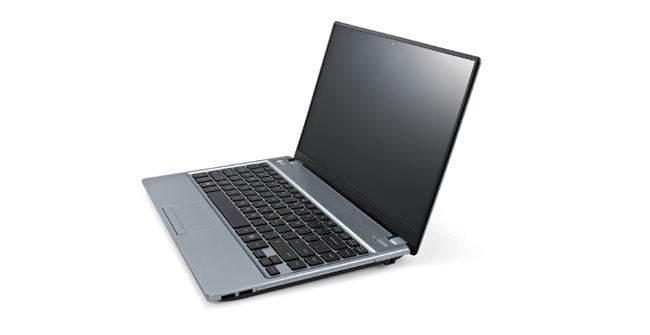 LG Electronics announced today a new line of “Blade” series notebooks, which boast an ultra-thin profile. The company says the two new laptops in the line will be available for purchase later this month.
LG Electronics announced today a new line of “Blade” series notebooks, which boast an ultra-thin profile. The company says the two new laptops in the line will be available for purchase later this month.
Making up the line are the P430 and P530 models. The P430 offers a 14-inch LCD screen that measures 4.3mm thick, while the P530 has a 15.60-inch display with a slightly larger 4.7mm thickness. LG boasts that the notebooks’ screens are “up to 50 percent thinner than any other notebooks in their class.” LG has also managed to give both models narrow bezels; the 14-inch P430, for instance, fits into the frame of a 13.3-inch notebook.
Thanks to the Blade series notebooks’ relatively small size, and all-aluminum cases, they’re also nice and light — something that can make even more of a difference than thinness. The P430 and P530 weight 4.28 pounds and 4.85 pounds respectively. That’s still quite a bit heavier than Apple’s super-slim MacBook Air, which weighs in at a mere 3 pounds.
On the performance side, both the P430 and P530 notebooks have all the power most users could want these days, with Intel‘s second-generation Sandy Bridge Core i quad-core processors. Both the P430 and the P530 come with a choice of a Core i3, i5 or i7 processor, all of which are significantly faster than the previous generation chips. In terms of graphics processors, both notebooks have dedicated Nvidia’s GeForce GT 520M GPU, which offers users solid, but not stellar, gaming and video capabilities.
Both models come loaded with Windows 7, and sport 1.3MP HD webcams. They also include SRS and DLNA technology, for content sharing with other DLNA-enabled devices. Customers can choose between either the “Misty Blue” or “Titan Black” brushed aluminum finishes.
LG says international shipments of the P430 will start at the end of this month, while customers throughout Europe, the Middle East, South America and Asia will have to wait until around the end of June to get their hands on the P530.


